Happy Monday, dear reader!
After last week’s depth, I thought it might be worthwhile getting back to basics, so this time, we’l look at supporting elements. These are a good way to beef up your force for not much extra in terms of money. From a game play perspective, support units can give you more flexibility to adapt to different scenarios.
Types of support
Mentally, I have divided support elements into four basic types, although there’s some overlap.
Mobility
These are support elements that move you around quicker. They are important in a campaign game, if that campaign factors in logistic elements. Logistic elephants should also be a thing, but we don’t have a miniature for that (yet).
They can also be important in a tactical setting if the terrain allows. In the ACP164 context, mobility support is vehicles. These can be as simple as an APC or as complex as an Aerodyne or Rotorcraft – but their basic function is to get your troops on target quicker, albeit at the risk of the vehicle being destroyed by the opposing force.
Some mobility assets mix troop carrying with firepower, usually by not having as much firepower as a dedicated ‘tank’ and by not carrying as many troops as a dedicated APC.
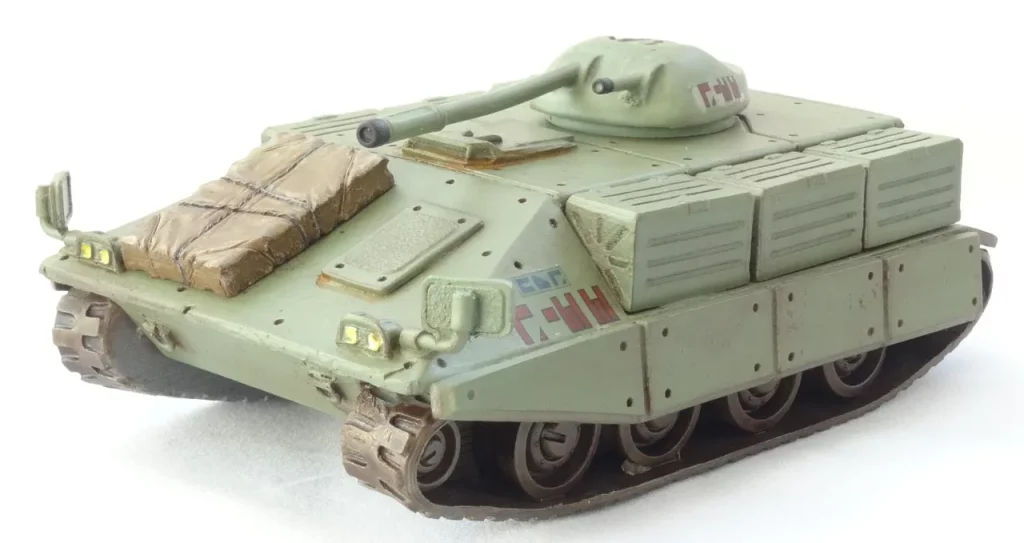
Firepower
These are assets designed to add to the firepower of your basic squad. Typically, they have a team of two or three critters. (Being a gunner, loader and section commander). They are employed tactically, and a great for supporting an advance or covering arcs in a defensive position. Firepower support includes extra machine guns, the EDF Auto Grenade Launcher, Portable Missile Launchers and sniper teams – which have two members – sniper and spotter – they are more of a defensive asset.
If you wanted to boost your firepower quickly, you can use the voucher code SUPPORT when ordering PML, AGL or Sniper miniatures and get 15% off the order!
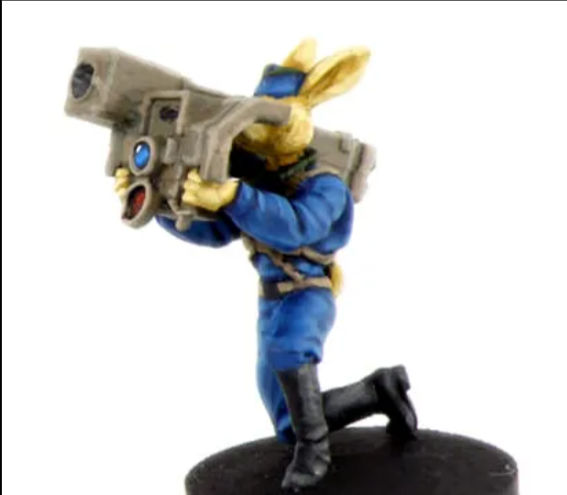
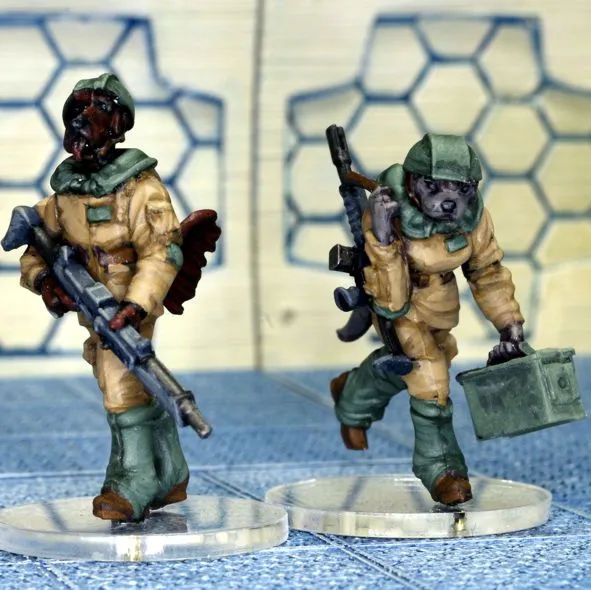
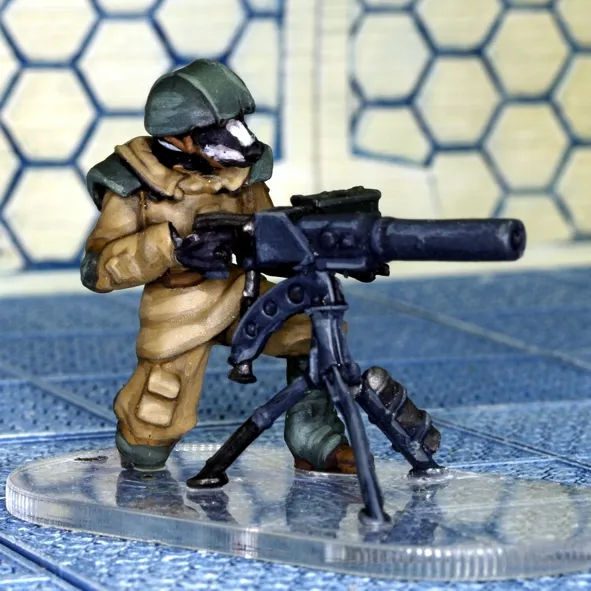
Ancillary Units
An area that isn’t covered particularly in the rules as they stand is the use of other supporting assets.
This is mostly because ACP focuses on the tactical engagement. The time period of an ACP game is about ten minutes from soup to nuts. In modern warfare, theses sorts of support units just don’t have time to get involved. For example, regardless of what you might have seen on the telly, your medic doesn’t get involved until the shooting stops. This is because they can’t save anyone if they are dead.
But in a campaign setting, spending points on a medic in your orbat will reduce recovery times for wounded units, and might convert dead units into wounded ones
Reconnaissance units can also be considered support. Both the EDF and ILR have recon troops in their order of battle, and they consist of half squads mounted in a vehicle.
But reconaissance is often more strategic than tactical. We’ve covered recon by using hero cards in the Almata Campaign, and this idea can extend to the broader game. Keep an eye on future releases for rules covering drone use and drone operators in more detail.
Intelligence units like ILR Lt’s Tori and Tasta are also potential support elements that could influence a campaign. It seems to me that there’s a lot of scope for more attention to campaign level support generally, so watch this space.
Engineering units can definitely add to the firepower of your combat force, as well as deloying demolition charges to get rid of pesky bunkers, or in support of stated mission objectives. We don’t currently have a set of miniatures for combat engineers, but they are mentioned in various ORBAT.
Differences between Factions
There are physical and philosophical differences between the ILR and EDF. First and foremost, ILR critters tend to be lighter framed, and have difficulty moving heavy weapons around. Philosophically, they also have the benefit of lots of troopers, so are less likely to need the firepower offered by things like the Auto Grenade Launcher. That’s why there’s an EDF AGL, but not an ILR version.
Otherwise, there is little difference , which makes this section nice and easy.
Employing Support Units
In real armies, most infantry formations will have a support company which has these elements concentrated in it. This is done for administrative and logistic reasons, as well as to avoid making the infantry commander’s job more complex than it already is. I suspect that you would rarely encounter a support company in the field as a discrete formation. Instead, the elements would be split into ‘penny packets’ and deployed by the battalion commander to they places they are needed.
For example, the commander might detach a squad from the support company to reinforce a defensive line, or send sniper teams to infiltrate into a rear area and look for targets of opportunity. From a collector’s point of view, this means that you don’t really need to build an entire support company. One squad will probably do you well.
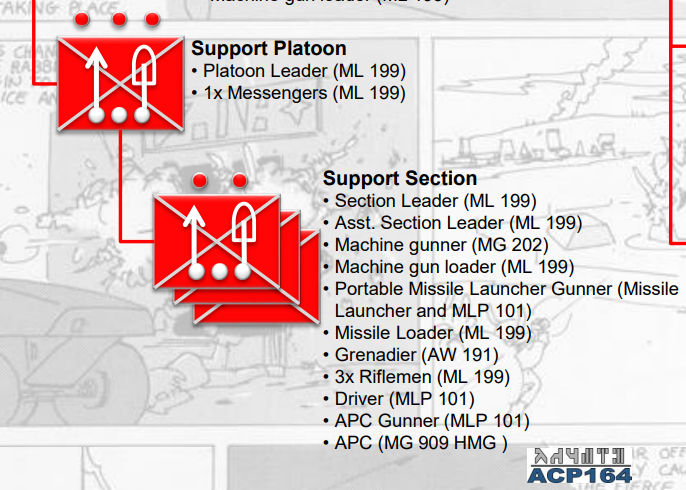
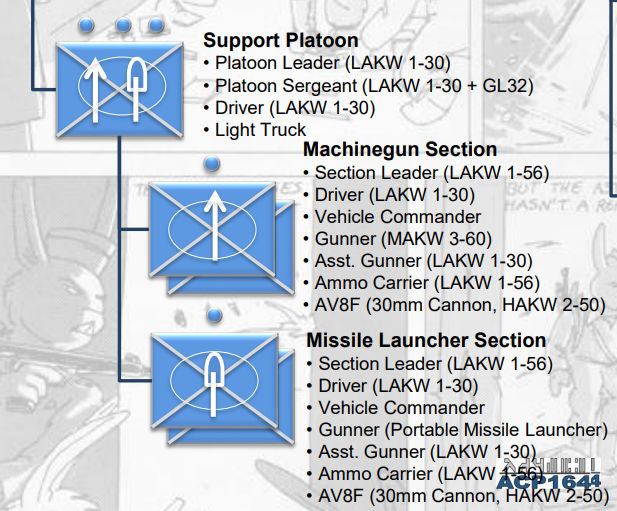
In case you wanted to build a support platoon, I’ve included some post-war examples to compare. You will note that organisationally, the ILR section fits into one APC. The platoon commander should have a light truck to cruise about in, as well, which is an omission on my part.
By contrast, the EDF troopers swan about in a pair of FIST vehicles, which gives them a lot more punch than their ILR equivalent. It’s worthwhile noting that this is because the ILR troops are classed as motorised infantry, vs the EDF mechanised infantry, which is broadly reflective of the different philosophical approaches.
A more serious omission from a sales perspective is that none of the published EDF ORBATs include the magnificent Auto Grenade Launcher. I do not know why this is so. It’s supposed to be in the post-war ORBAT as per the Almata campaign, but it just isn’t there. It may be time for a review!
Summary
In this post I’ve looked at the support options available to you as an ACP164 player, and what they might be used for. I’ve also looked at the things we didn’t include, and why that’s the case. The value of this sort of post for me is that it forces me to have a closer look at things, and honestly, gives me ideas. Plus, naturally, I need to review and rerelease a lot of ORBAT documents.
Hopefully, there’s something in it for you as well.
In our next, I’ll look at special forces.

0 Comments